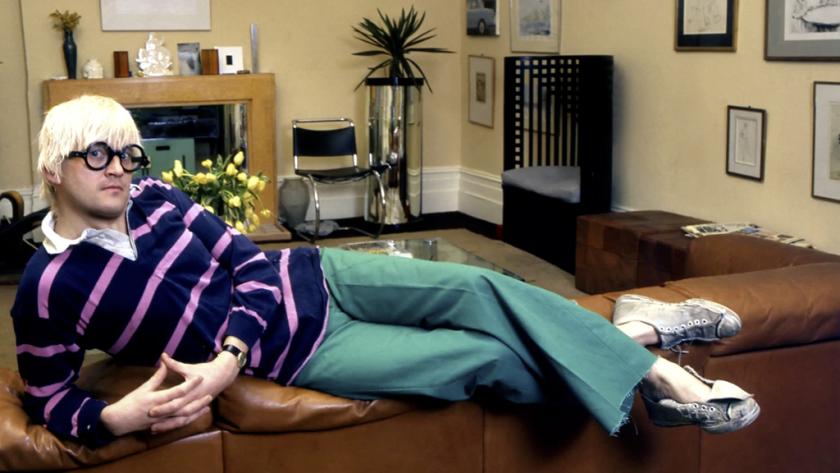Since David Hockney entered his eighth decade (he is now 77), we seem to have witnessed an accelerated output of major exhibitions, biographies and documentaries. The public appetite has never tired of this most tireless of artists, but it’s an interest that’s been given fresh impetus by the exuberance and vivacity of his epic series of paintings of the Yorkshire Wolds. Bruno Wollheim’s TV documentary, Hockney: A Bigger Picture (2009), was a look at this recent period of renewed vigour and creativity, while Randall Wright’s cinema-released second film of the artist – the first, David Hockney: Secret Knowledge (2003), was about the artist’s decades-long exploration of the traditional use of optical aids – concentrates on the arc of Hockney’s life and career.
Made up of archive footage interspersed with current interviews with intimate friends, his sister Margaret and Hockney himself, the first thing any diligent Hockney-observer should note is that the film really isn't as well-researched as it should be. One friend talks of the teenaged David’s youthful fearlessness in defiantly standing out from the crowd, mentioning as proof his unflattering pudding bowl haircut and his habit of pushing a pram around Bradford. What’s odd is that there’s no mention that this was obviously him mimicking Stanley Spencer, who would daily push his battered pram, containing all his painting equipment, around the Berkshire village of Cookham. What Spencer did seemingly unconscious of his image, Hockney copied fully cognisant of his. Given this, perhaps one shouldn’t be surprised that in a recent interview with Wright, the director struggled to name any of Hockney’s artistic influences.
The film also omits the death last year of Hockney’s 23-year-old assistant Dominic Elliott, who died at the artist’s Bridlington home after drinking drain cleaner following a 24-hour drug binge. The death precipitated Hockney’s return to LA, and though one might understand the danger of this untimely death dominating the film, to omit it altogether feels oddly conspicuous, especially when Hockney talks quite candidly about the untimely death of friends.
This is an affectionate portrayal that won't delve deeply and will offer no unexpected insights. But its real problem is that it can't utilise the material expertly enough not to feel both disjointed and meandering. If you want to see a masterclass of how archive material and talking heads can make a truly great portrait of an artist, even when there are clearly topics that are off limits, then watch Michael Scorsese’s epic No Direction Home, a bravura portrait of the ever-enigmatic Dylan, or perhaps Robert B. Weide’s equally fascinating Woody Allen documentary. If only Wright could handle his material half as well.
No extras feature in this release.














Add comment